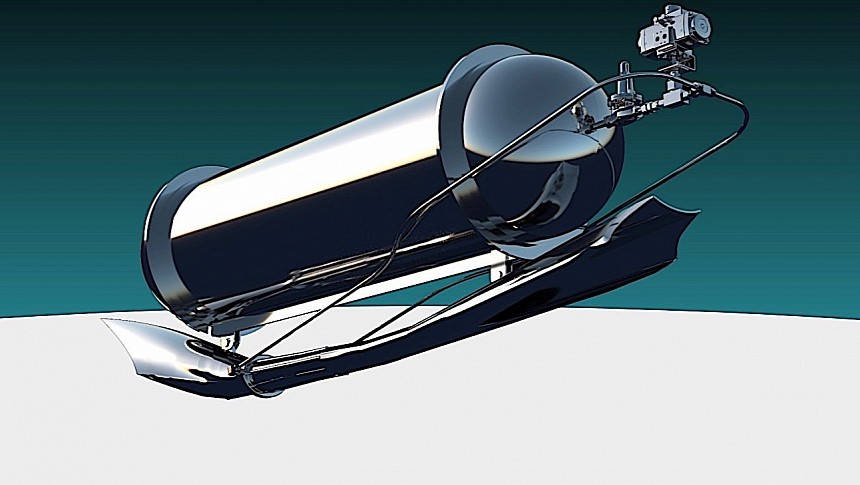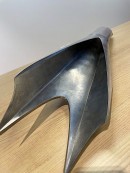The world of hypersonic vehicles is getting increasingly interesting, with a number of companies already working on designs that should make high-Mach travel inside our planet's atmosphere a reality. And given how with more companies involved comes a greater risk of technologies being replicated, some of them have already begun securing patents for their ideas.
One of the crews trying to make a name for themselves in the hypersonic industry is Australian Hypersonix. These guys are working on a scramjet engine that should run on hydrogen and enable flights at speeds that can be as high as Mach 12 (9,207 mph/14,817 kph).
Essential to this idea is a type of engine called Spartan. As said, unlike other designs of its kind, it will burn hydrogen, and that not only makes it clean in relation to the atmosphere it's supposed to fly in, but also a bit more capable: hydrogen allows the engine to be switched on and off repeatedly during the flight, and a non-ballistic trajectory is within the realm of possibilities.
A series of innovative materials will go into the fixed geometry Spartan. For instance, last week we learned of the Spartan using parts made by 3D printing using High-Temperature Ceramic Matrix Composites (HTCMC).
Now, we get word of the engine's tech getting an official U.S. patent. It's a document protecting an "airframe integrated scramjet with fixed geometry and shape transition for hypersonic operation over a large Mach number range," and should keep the Australians' idea away from potential technological vultures for the next two decades.
The engine will first go into an aircraft called DART AE. It's a machine that will compete in the American Defense Innovation Unit's Hypersonic & High-Cadence Airborne Test (HyCAT) program. For the test, though, a piece of tech developed by America's Rocket Lab will be used as a platform, namely the Hypersonic Accelerator Suborbital Test Electron (HASTE).
When the DART is ready, with help from American defense contractor Kratos, it will measure three meters long (10 feet) and will tip the scales at 300 kg (661 pounds). It is, however, not the only aircraft that will make use of the Spartan, as the Australian company is planning a four-engine vehicle designed for payload delivery to low-Earth orbit, called Delta Velos.
More importantly, a so-called hyperliner, capable of carrying cargo and passengers at hypersonic speeds, is also considered for the future.
How advanced is the Spartan? Last time we checked, we learned of the engine having already been subjected to over 6,000 ground firings and 11 sub-orbital flights. For the first true test flight, the DART should fly thanks to the scramjet for as much as 500 km (311 miles), at speeds that could reach Mach 7 (5,371 mph/8,643 kph).
Essential to this idea is a type of engine called Spartan. As said, unlike other designs of its kind, it will burn hydrogen, and that not only makes it clean in relation to the atmosphere it's supposed to fly in, but also a bit more capable: hydrogen allows the engine to be switched on and off repeatedly during the flight, and a non-ballistic trajectory is within the realm of possibilities.
A series of innovative materials will go into the fixed geometry Spartan. For instance, last week we learned of the Spartan using parts made by 3D printing using High-Temperature Ceramic Matrix Composites (HTCMC).
Now, we get word of the engine's tech getting an official U.S. patent. It's a document protecting an "airframe integrated scramjet with fixed geometry and shape transition for hypersonic operation over a large Mach number range," and should keep the Australians' idea away from potential technological vultures for the next two decades.
The engine will first go into an aircraft called DART AE. It's a machine that will compete in the American Defense Innovation Unit's Hypersonic & High-Cadence Airborne Test (HyCAT) program. For the test, though, a piece of tech developed by America's Rocket Lab will be used as a platform, namely the Hypersonic Accelerator Suborbital Test Electron (HASTE).
When the DART is ready, with help from American defense contractor Kratos, it will measure three meters long (10 feet) and will tip the scales at 300 kg (661 pounds). It is, however, not the only aircraft that will make use of the Spartan, as the Australian company is planning a four-engine vehicle designed for payload delivery to low-Earth orbit, called Delta Velos.
More importantly, a so-called hyperliner, capable of carrying cargo and passengers at hypersonic speeds, is also considered for the future.
How advanced is the Spartan? Last time we checked, we learned of the engine having already been subjected to over 6,000 ground firings and 11 sub-orbital flights. For the first true test flight, the DART should fly thanks to the scramjet for as much as 500 km (311 miles), at speeds that could reach Mach 7 (5,371 mph/8,643 kph).








